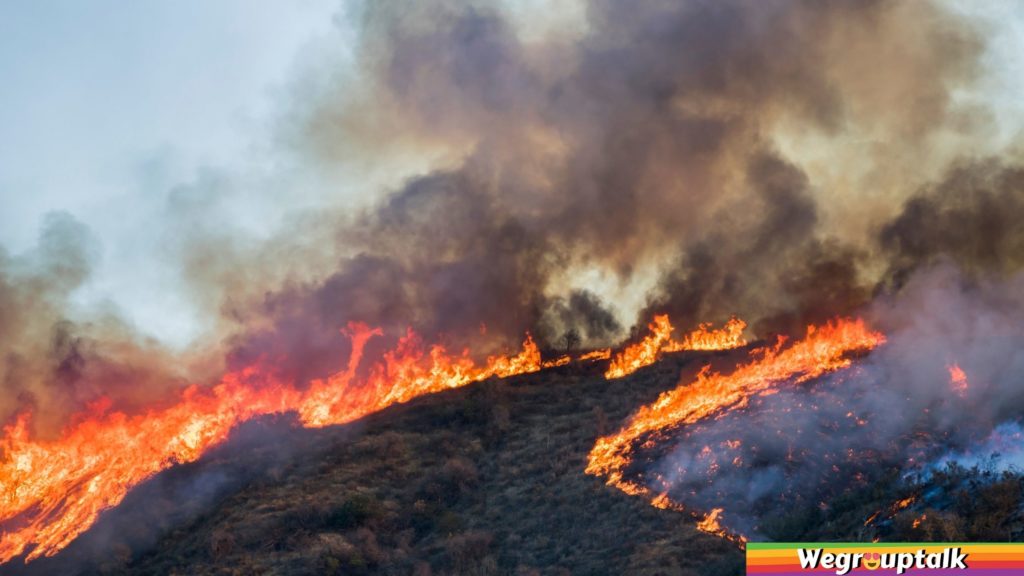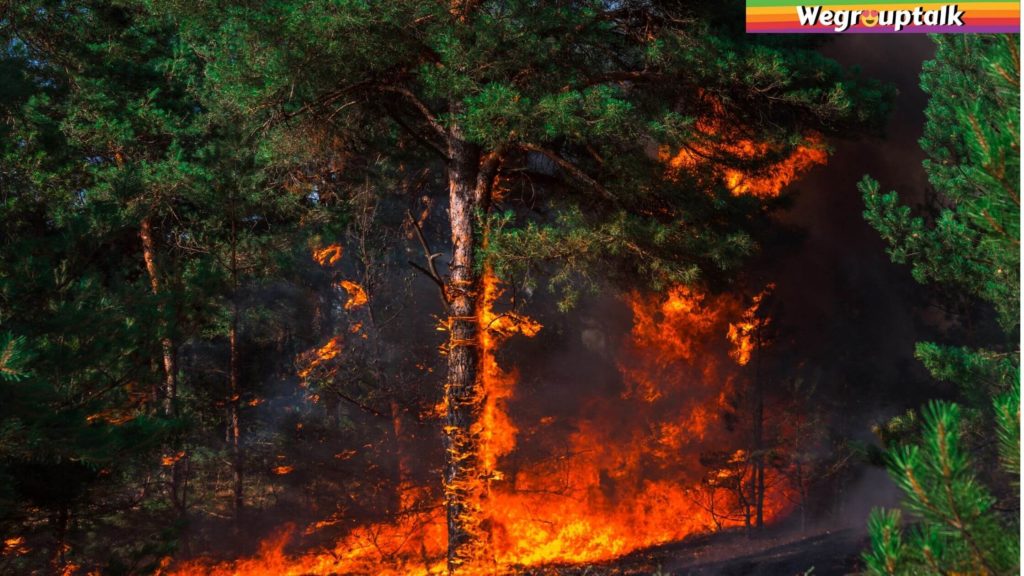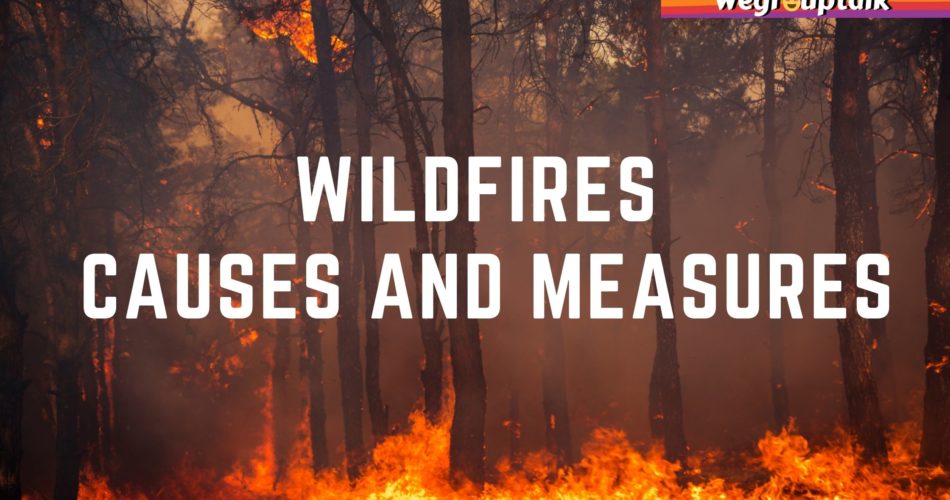Wildfire is a topic that is often seen floating in the news, and just a spark of fire can set a whole forest on fire—just a spark. Wildfires? Do countries have every year? What are the reasons? What are the after-effects? What measures can be taken and are took? So, this brings me to the main question of what exactly is a wildfire?
Wildfires are basically unplanned fires that burn areas like grasslands, paddies or forests. These devastatingly dangerous fires spread quickly and destroy not only the forest but also communities. They spread faster than you think they do, and they do not tame themselves. They burn, just burn.
Causes or reasons for the wildfire?
The primary cause of wildfires is humans. Some careless activities of human beings lead to situations like these. These reckless activities can include negligently discarded cigarettes, unattended campfires, intentional acts of arson, downed power lines and the burning of debris. Human activities cause as many as 90% of the wildland fires in the world. The rest of the 10% is caused because of lava or lightning.
According to reports by the World Metrological Organisation, the average global temperature in 2019 summer was 0.95° celsius which was above the 20th-century average temperature. Many nations in the world and oceans shattered heat records as well.
In the year 2019, several wildfires broke out globally. This, in turn, increases the risk of global wildfires as extremely warm and dry weather is ideal for wildfire. The issue of wildfires is no more a local issue, but because of the global warming that is prevalent in this era, it has become a living environment and safety issue to the whole world. Hence, we need to be acquainted by the intensity and scale of such massive wildfires that are happening in the world now and then.
Here is a look at some countries where major wildfires broke out in the world recently or the countries where we commonly get to see wildfires. In the list, we will also be seeing the after-effects of it. We shall also be looking at the measures as to how we can stop it because we need to anticipate and prepare for wildfires that occur so that we can attack them early and efficiently reduce their impact and prevent its spread.
1. Australian Wildfires
The country has a land of 7,620,000 km², making it the sixth-largest nation in the world and the largest country in Oceania. As per the forest Australia website the nation has a total of one 134 million hectares of forest which are grouped into 458 communities of forest that account for around 17% of the country‘s land area and most of these forest communities are spread in the states of Queensland and New South Wales. This census is of the year 2016.
Bushfires are an annual occurrence in the country of Australia. Generally, the fire season of the country runs in October, November, December, January, February, March and up till April. One of the primary reasons behind the ferocious Australian wildfires that have been happening recently is the climate changes. Australia is the driest continent on the planet, and the hot and dry conditions of the country make the country‘s wildfire’s season even more longer and much more dangerous. In the past two years, many areas of South East Australia have been facing drought because of below-average rainfall. Heat waves that are associated with global warming have increased the problem even more.
Recently, record-breaking heat waves hit Australia who’s temperatures reached as high as 49° celsius in the New South Wales. In addition to this, the wildfires spread rapidly because of the strong winds that blow over there.

After effects
There was an immediate loss of biodiversity in Australia because a lot of species are endemic to the continent. Environmentally, the smoke that came up from the fire added on to the carbon dioxide emissions on the planet. One very worrying after effect of it is that the debris is from the fires could threaten water supplies to the area. The next consequence of it is that it could speed off the melting of the New Zealand glaciers.
Measures
To reduce the future damage the government at all levels must act. The state and federal authorities have deployed more than 2000 firefighters in New South Wales. What can be done is that at local levels, the firefighting capabilities must be professionalised. The government must invest more in the training and education of firefighters. Its area of focus should include enhancing early warning systems and fire protection capabilities. It must launch public awareness campaigns on the dangers that are posed by climate fuelled bushfires and then explain them measures as to how are you supposed to prevent it.
2. Amazon Wildfires
Amazon rain forests are the largest rain forests of the world covering an area of 6.7 million square km. It is the host to 10% of the plants and animals of the world and home to 30 million people. It captures 2.25% of global carbon dioxide and gives around 20% of oxygen to the planet Earth. This makes the forest a global concern.
However, deforestation has been a major issue for decades minute. These forests do not burn on their own because of the torrential rains that happened over there. Somehow, every year because of some human-driven deforestation activity, the forest results in a number of wildfires. The countries in which the Amazon forest is situated are Bolivia, Colombia, Brazil, Peru and Venezuela.
The year 2019 saw some unprecedented weather conditions in the Amazon. There were warmth and dryness across the forest, and NOAA ( National Atlantic and Atmospheric Administration) reported 2019 as the second warmest year on record in the Amazon area. This made the wildfires of 2019 in the rainforest even more alarming and terrifying. It has also been noted that the number of wildfires has increased ever since June 2019. This monitoring was done through satellite monitoring systems by the Brazil space research Centre INPE.
After effects
It released a vast amount of carbon dioxide pollution into the atmosphere. Hence, the air quality in the surroundings decreased. This affected the health of the people living nearby. The weather patterns also changed because rain forests add water to the atmosphere but because the forests were burnt, which meant less rainfall.
Measures
The Brazilian government is trying to discourage the practice of using fire to clear land for crops and cattle. It has been doing campaigns telling people to use other methods instead of using fires. Fighting the fires has become of utmost importance now, and for the longer term, it is more important to focus on deforestation and not to do it. It’s time that afforestation as a step to leap.
In other nations where the Amazon burns, like Bolivia, regulated burns are also a common deforestation technique. There to douse the fire, the government brought in a modified Boeing 747 supertanker. It can also be further used in case of forest fires.
3. Wildfires in the Arctic Region
The Arctic is the area around the north pole of the planet. This area includes Siberia of Russia, Alaska of USA and Canada and the Arctic Ocean as well. This strip of the area is a cold plain covered with Moses and grass-like plants while the Arctic Ocean is mostly covered by ice.
Wildfires in Siberia (Russia)
According to Russian aerial Forest protection service more than 5.5 million hectares of forest in Russia, Siberia has been burnt in 2019 summers. The massive wildfires began in June, but fortunately, most of the affected area was not inhabited. As per the data gave by NASA, the smoke from the burning of Siberia and forest reached the territories of Alaska and Canada as most of the fires were kept unattended by firefighters allowing the fires to freely burn due to which it extended for a long time.
Measures- The government is trying to plan and allocate resources to put out fires that can happen in future. As another measure taken by the citizens, people are forming volunteer groups That carry out the problematic posts of extinguishing fires when the local emergency services fail to meet the need.

Alaskan Wildfires (USA)
It is usually said that the wildfires are a very normal part of the life of people in Alaska. Alaska experienced an extreme wildfire season, and this was mostly because of the dried out vegetation and the record-breaking temperatures. There were also extreme drought conditions in the year 2019.
Measures- the government is trying to adopt new homes in high-risk fire areas to meet the minimum standard requirements on fire-resistant construction and access to water for the firefighters in case of wildfire in future.
Wildfires in Canada
Canada Is a country towards the north side of the Arctic Ocean. Majority of its land is dominated by the tundra region and the forest area. A lot of communities are nestled into these forests. Buildings and plants twine together into it so the local communities that are present over there or under constant risk of wildfires. Droughts and warming temperatures have recently been the biggest reason for wildfires over there.
Measures: The country now uses machine learning to predict when and where are the chances of severe fire weather. They are trying to develop appropriate support aids.
After-effects of Wildfires in the Arctic
The wildfires release a lot of harmful pollutants and toxic gases into the atmosphere. The carbon emissions that released from the wildfires set new records for pollutants which were released in the areas facing the worst damage. Wildlife also suffers majorly because of such wildfires.
The next after effect which the scientists warn us about is the more thawing of our Arctic permafrost because of the fires. When temperatures reach around a hundred degrees in a frozen area, it undeniably means that something is very off. Wildfires set the temperature of the area very high. Siberia is known for its wildly fluctuating temperatures. It even holds the world record for the greatest temperature range from -90° to 98° Fahrenheit.
It is high time now that the governments realise that if we invest in wildfire science now, we can learn to manage them better so that we can save lives, businesses, homes and forests for the future. And on our part, we all must strive to make those things that we value more fire-resistant. It is the need of the hour.
Follow us on FACEBOOK, INSTAGRAM and TWITTER to stay connected~!!




